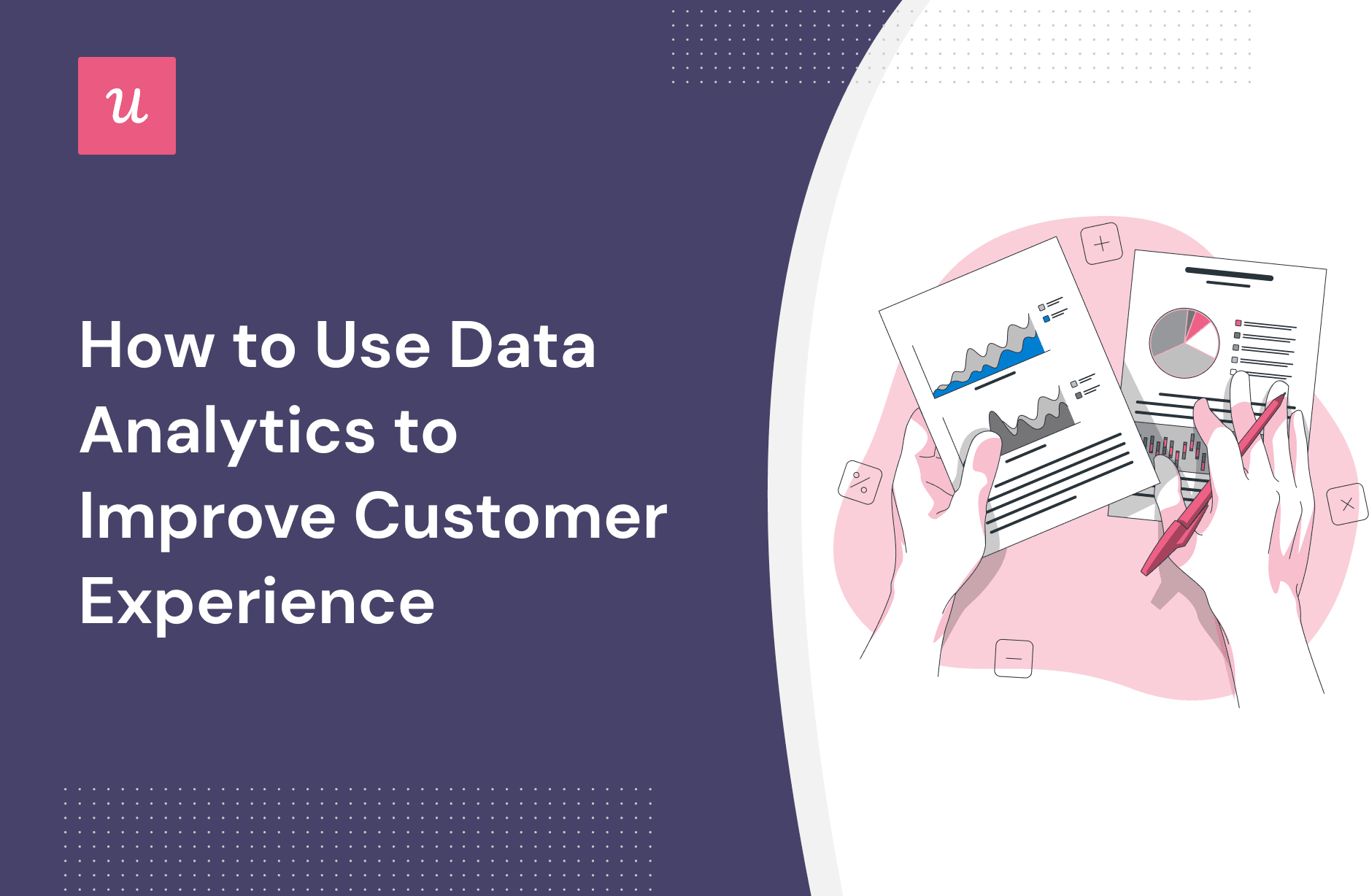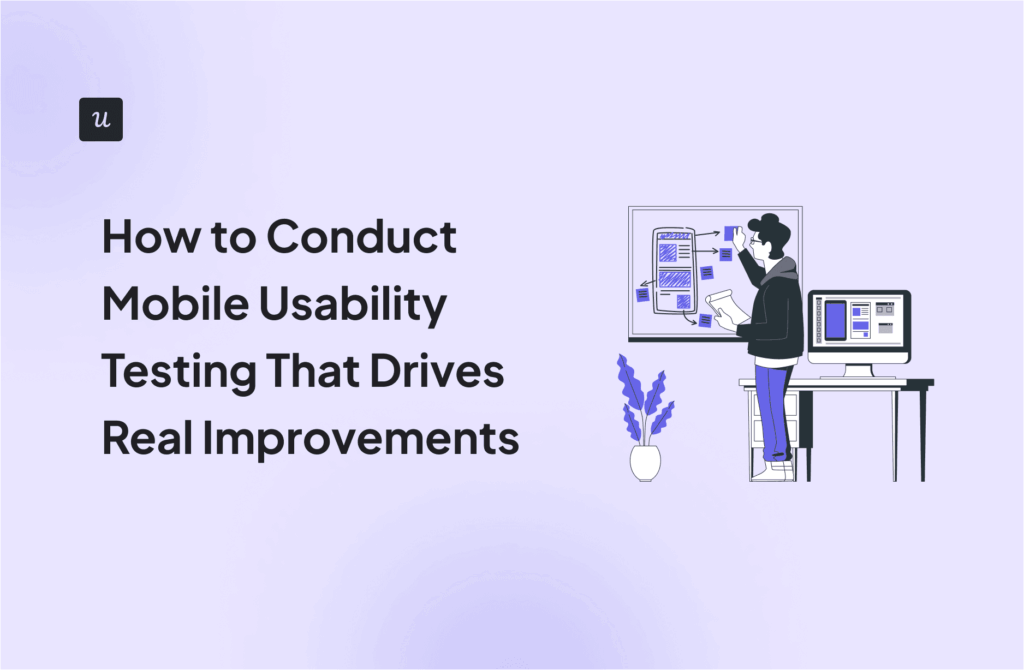
How to Use Data Analytics to Improve Customer Experience
Get The Insights!
The fastest way to learn about Product Growth, Management & Trends.
What is data analytics for customer experience?
Analyzing data from customer interactions can help you. These customer experience analytics will give you a clear idea of customer satisfaction, customer loyalty, and other metrics that reflect how customers interact with your product.
You can also leverage data analytics to improve customer experience and overall enhance customer satisfaction — thus increasing customer retention in the long term.
Why is data analytics important for improving customer experience?
There are a few reasons why data analytics in customer experience management is so crucial.
The only way to provide an exceptional customer experience is through analyzing customer feedback and customer analytics — then using all the data to make your next decisions.
Data analytics can:
- Identify patterns and trends. CX analytics give you a holistic view of past patterns and future trends that could impact business growth moving forward. Big data analytics can even make accurate predictions of how certain changes will affect the customer experience.
- Uncover customer behavior and preferences. When you analyze customer interactions with an object lens, this data analysis often highlights customer needs, pain points, and behaviors that you haven’t planned for.
- Make data-driven decisions. By looking at customer experience analytics, you’ll be able to use these valuable insights to make data-driven decisions instead of relying on your product marketing strategy alone.
- Improve customer satisfaction and loyalty. Increased customer loyalty is a major competitive advantage so building brand loyalty by increasing satisfaction scores should always be a priority. By looking at CX data and sharing these key metrics with your customer service teams, customer service representatives will be able to curb the number of dissatisfied customers and increase brand loyalty.
- Increase customer lifetime value and retention. Customer retention and LTV optimization are both paramount to generating more revenue — especially if you’re utilizing land and expand strategy to drive account expansion.
The 5-step process for analyzing customer data with customer experience analytics
Here’s the 5-step process you can follow to get the most out of your customer experience analytics:
- Decide your goal
- Collect customer data
- Visualize collected data
- Choose an analytics process
- Use the insights
Let’s take a closer look at each of these steps in the sections below!
Decide your goal
Before you even start to collect data or look at customer experience analytics, you first have to figure out what you’re trying to identify.
You can use the SMART goal-setting framework to ensure that you gain insights on data points that actually reflect customer needs and business goals.

Collect customer data
There are two main types of analytics that you’ll be looking at when looking at customer experience data: direct feedback and indirect feedback.
Direct customer feedback
Direct customer feedback includes metrics like:
- Net Promoter Score (NPS)
- Customer Satisfaction Score (CSAT)
- Customer Effort Score (CES)
- Voice of the Customer (VoC)
These are the CX analytics that most product marketers think about as they offer direct insights into customer behavior.
Direct customer feedback could also include responses you receive on social media or comments from feedback surveys that you send out.
Indirect customer feedback
Rather than monitoring behavior, indirect customer feedback is influenced by customer behavior. This includes metrics like:
- Average Handle Time (AHT)
- Customer Lifetime Value (LTV)
- Average spend
- Customer churn rate
- Customer renewal rate
Whenever you calculate the customer lifetime value (LTV) you’re getting an indirect look at how satisfied customers are with your product (since they wouldn’t continue paying for a subpar solution much less upgrade their subscription).
Other ways to collect indirect customer feedback include social listening, customer review monitoring, and analyzing voice chat transcripts.
These data points may not be as direct as something like NPS or CSAT scores but they’ll help you drill down on the business outcomes that result from the customer experience.
Visualize collected data with different dashboards
Once you’ve collected data on metrics like customer satisfaction score, lifetime value, and churn rates then it’s time to visualize everything using different dashboards.
For instance, you could use an NPS dashboard to look at response rates for NPS surveys and the percentage of promoters versus detractors.

Choose an analytics method and analyze customer data
There are various data analytics solutions and processes that you can use to sift through your customer analytics insights. Each process has its own pros and cons so it’s important to be familiar with the options available to you.
A few different analytics processes to consider include:
- Descriptive analytics. Descriptive analytics uses both real-time and historical data to spot trends as well as the relationships between certain metrics.
- Diagnostic analytics. Diagnostic analytics uses data to figure out why certain events occurred whether that’s a rise in churn rates, a drop in lifetime value, or other shifts in the makeup of your SaaS business.
- Predictive analytics. Predictive analytics uses models and algorithms to predict future performance or the likelihood of certain outcomes.
- Prescriptive analytics. Prescriptive analytics uses data to figure out what the best course of action is and make decisions based on multiple factors.
Which one you go with will ultimately depend on what type of data you’re collecting, which insights you hope to gather, and the business outcomes you’re trying to achieve.
For instance, predictive analytics is often best for businesses that are trying to reduce risk or lower costs.
Use the insights to improve customer experience
Finally, it’s time to use your findings to improve the customer experience. Remember, collecting and analyzing data is only useful if you actually utilize those insights to make lasting, positive changes to your product.
Gathering customer journey analytics but never making changes to the onboarding process or customer engagement strategy would be a total waste of time. As such, you should proactively resolve negative patterns that you identify and double down on the features that get new customers in the door.
Another use case would be using your collected data to predict churn and then taking measures to prevent it.
How implementing data analytics can improve the customer experience
Now that you have a mechanism for collecting data and then analyzing it, it’s time to put those insights to good use.
Here are four ways you can improve the overall customer experience using the data that you’ve gathered!
Track customer behavior and increase customer engagement
Engagement data can highlight areas of your product that aren’t being used often yet have the potential to add value to existing customers.
Whenever you come across one of these untapped opportunities, it’s best to proactively nudge feature discovery using in-app experiences that draw attention to these features.

Monitor customer interactions to identify friction points and reduce customer churn
Removing friction points will make for a smoother onboarding experience. This is crucial since a lower customer effort score generally translates to lower churn rates as well.
You can use Userpilot’s tagging feature to see how users interact with various UI elements and then improve them to lower friction.

Personalize the customer journey with the collected customer data
The more customer data you collect, the easier it will be to personalize the customer journey through segmentation. For example, you could highlight the features that are more relevant to different user segments.
Crafting a personalized journey will improve the customer experience which can increase customer loyalty.

Adapt your in-app marketing strategies based on customer preferences and needs
Customer analytics can identify which pain points your customers are dealing with so you can then adjust your in-app messaging to better suit their needs.
You can also use customer analytics to create targeted marketing campaigns that feel more relevant to customers.
This is especially important for in-app marketing strategies that can feel intrusive if they don’t reflect your customer’s wants and needs.
For instance, you could trigger a specific webinar popup when users struggle with a particular feature:

Conclusion
As you can see, data analytics can help you improve the customer experience by reducing friction, personalizing the journey, and adapting your marketing based on the needs of your users. If you follow the steps in this guide then you’re bound to see higher customer satisfaction scores in no time!
Ready to start collecting data and analyzing insights? Get your free Userpilot demo today!







